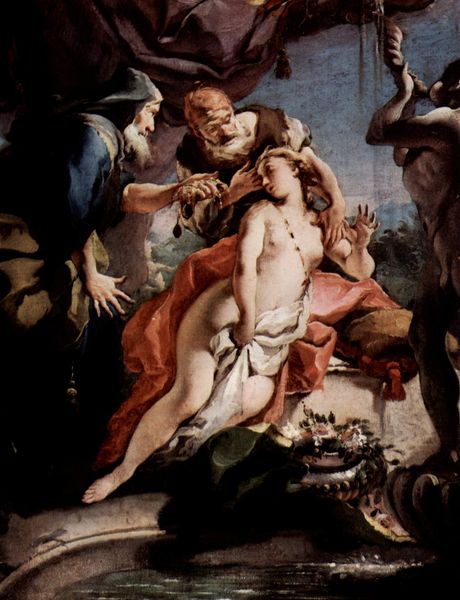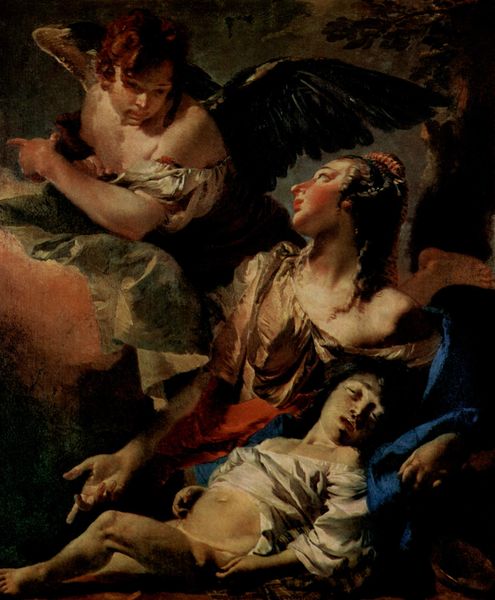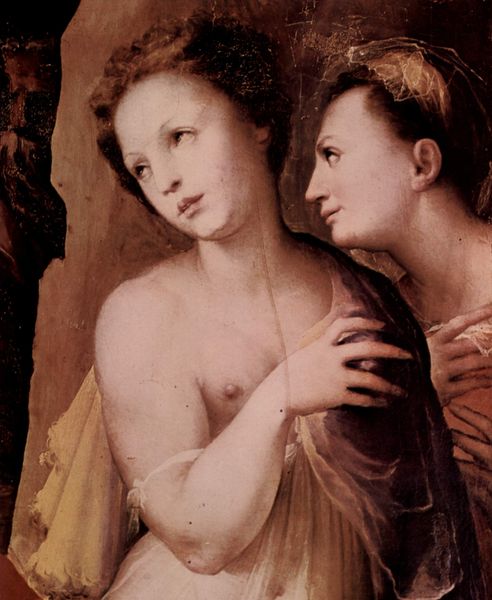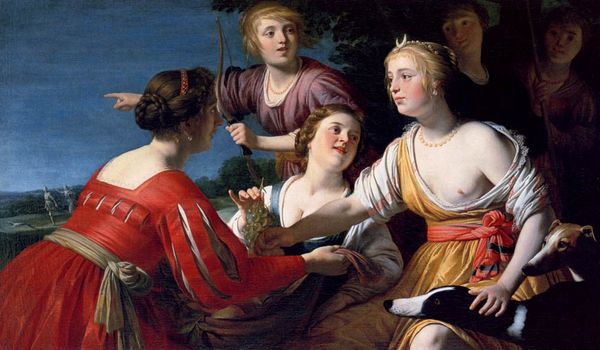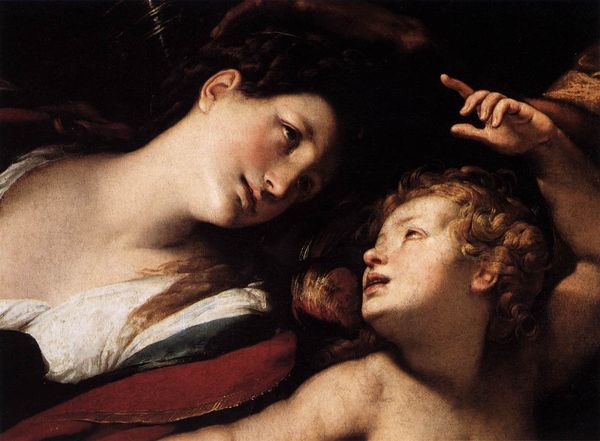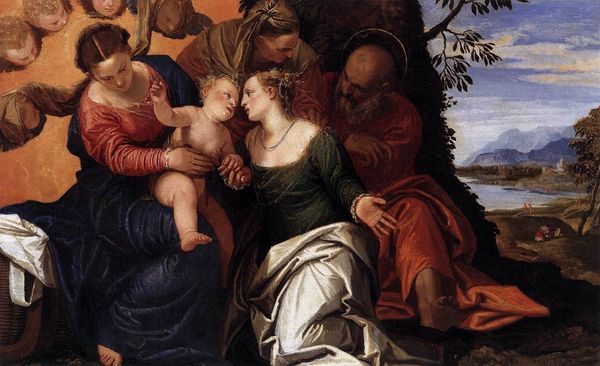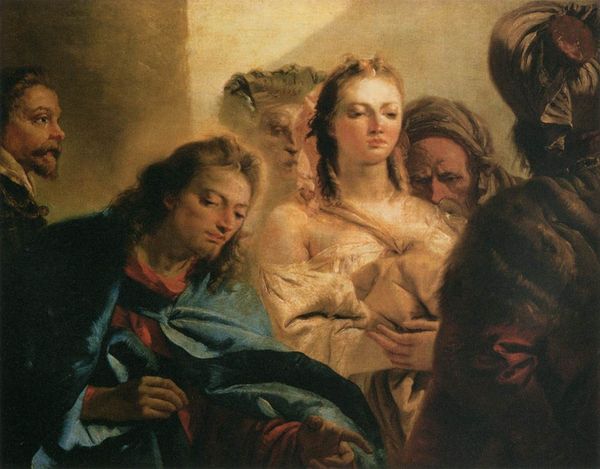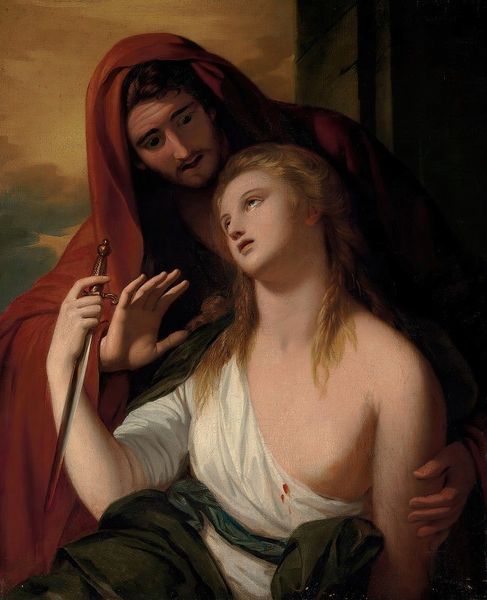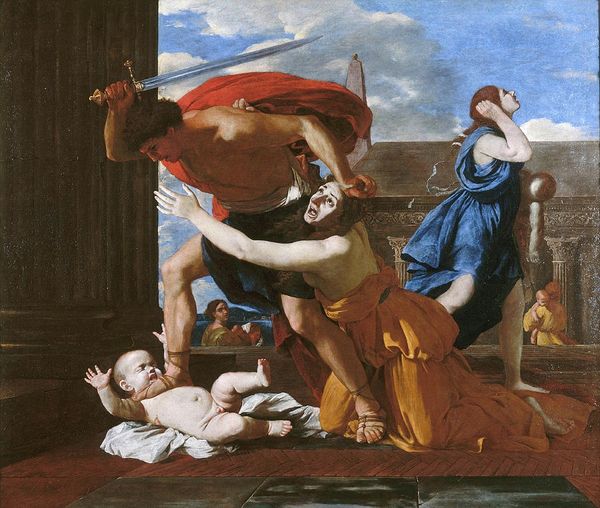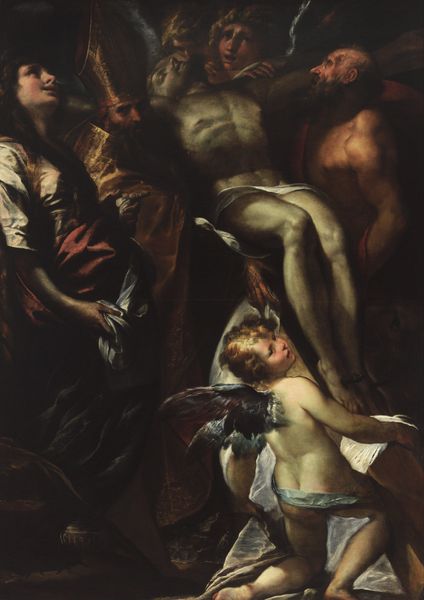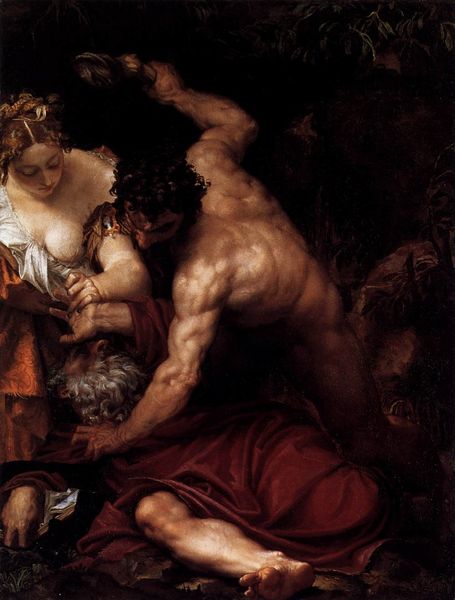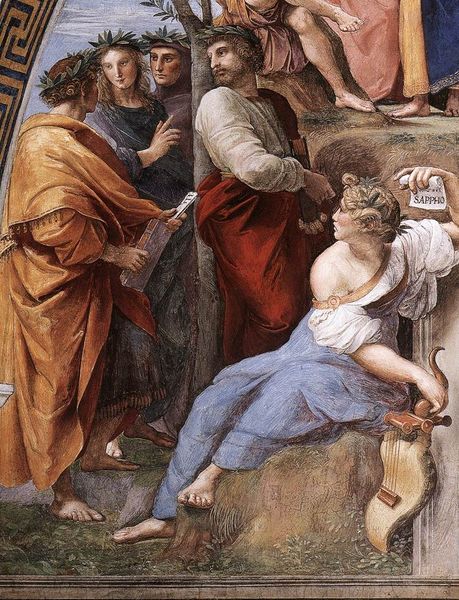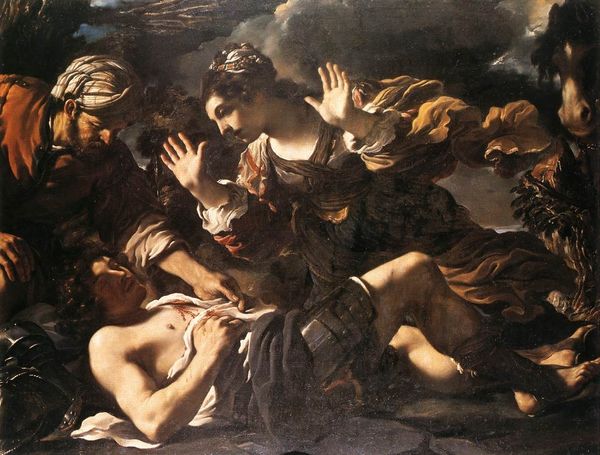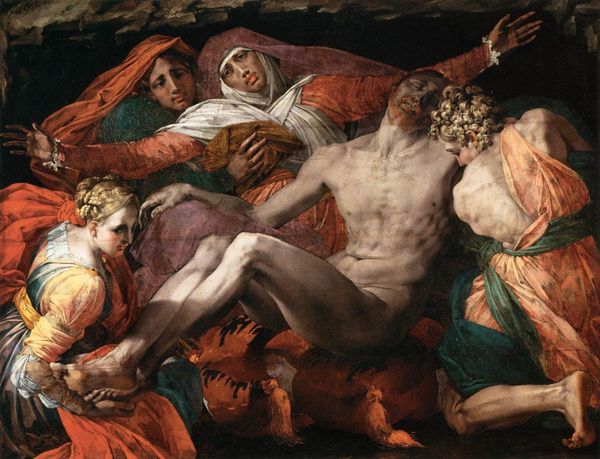
painting, oil-paint
#
allegory
#
narrative-art
#
baroque
#
painting
#
oil-paint
#
figuration
#
chiaroscuro
#
mythology
#
history-painting
Copyright: Public domain
Curator: Looking at this detail from Peter Paul Rubens’s “Descent from the Cross,” created around 1614, the emotion is so palpable, isn’t it? I find myself immediately drawn into the sorrowful scene. Editor: The composition is definitely dramatic; I feel like I am experiencing the intimate grief and quiet intensity in real time. I imagine it sparked conversations about what it meant to believe in and accept human loss when it was unveiled to a contemporary public. Curator: It certainly does capture human loss and faith, particularly focusing on compassion and human connection through religious art. Look at the placement of hands, the tender way they support the body. It all contributes to a feeling of collective mourning, really highlighting Christian values. Editor: The Baroque style emphasizes movement and heightened emotionalism, and this definitely fits that. Were these elements always well-received, or did some people react negatively? Curator: Well, in its own time, the artistic emphasis on raw, genuine emotional expression may have been perceived as disruptive or pushing against established aesthetic traditions. Over time though, it's gained iconographic significance—the strong emotional representation has become central to its cultural influence. Editor: So the art itself reflects a turning point? A shift in how artists felt empowered to depict more emotionally expressive scenes in relation to both public audiences and within religious institutions themselves? Curator: Exactly. Religious commissions frequently navigate complex power dynamics and institutional priorities; so it is important to note that "Descent from the Cross" wasn't just art for art's sake. Its public presentation at the Cathedral of Our Lady had historical and political importance during its era, revealing shifts in how those in authority related to society. Editor: It makes me reconsider how displays of public emotion are often viewed as performances and subject to interpretation, both then and now. Thanks, I think this adds a whole new dimension to experiencing this particular masterpiece. Curator: I agree! This scene certainly represents a complex blend of theological weight and symbolic language, reflecting both the historical era and universal experience.
Comments
No comments
Be the first to comment and join the conversation on the ultimate creative platform.
